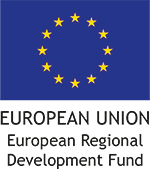Since the start of the monitoring of beach litter in the Baltic Sea, perhaps most notably by the EU-funded project MARLIN, it has become evident that there really is nothing that you can’t find among the litter items. The most common items, as you surely know by now, are the ones made of plastics. For instance, in Turku city we often find peculiarities such as toys, even though the majority consist of the “regulars” cigarette butts, plastic bottle caps and so on. What we really find unusual are items that do not seem to have a clear pathway, but somehow still end up in the water ways in substantial quantities.
Hygiene products is one category that surprise us from time to time, often consisting of q-tips and sanitary pads. Strikingly, q-tips ranks fourth in the list of most common litter items in the Baltic Sea. But how do they end up there?
We know that it is very common for litter items to end up in toilets, a subject that is quite often in the news as well. We also know that in developed wastewater treatment plants, macro-waste can be removed. Litter ending up in the wastewater system is obviously a huge inconvenience for water treatment, a fact that we really can’t stress enough. Treatment plants are first and foremost made for taking out nutrients and different hazardous substances from the water – not plastic trash that should not be there in the first place. Toilet paper is the only piece of litter allowed in the toilet, since it is designed to break down already in the sewerage system. Many seem to think that all organic substances, including paper towels and cotton balls, get the pass, but the truth is that all of these can induce clogging in the sewage.
Litter removal causes a lot of unnecessary stress for the treatment process. According to the Finnish national news site YLE, in Helsinki, Finland, an estimated 1000 tons of litter is removed from the wastewater treatment plant every year, creating a huge and unnecessary burden for workers at the treatment plant (check out the variety of litter items found here). Few knows that what you throw in your toilet might actually find its way to the ocean, and quite ironically, due to blockage in the sewage caused by substances or items that should not end up in the wastewater. What happens is that a clogging becomes so severe that the only alternative is to discharge sewerage to the environment untreated. When serious flooding occurs, it is practically impossible to retain wastewater and everything that flows out with it.
No data of how often leakage occurs is available, nor how much litter ends up in the ocean through sewage spills. So far studies have concentrated on microplastics in the actual wastewater, a subject that has not been the object of our project, but is currently a rising topic in the science world. What we do know is that your toilet is not a trash bin and that no good can come out of treating it as one. A lot of research awaits in the near future. Luckily enough, we have clear signs of where to start..

